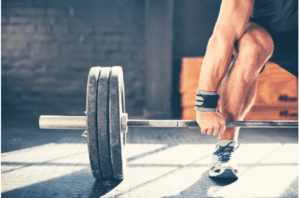
As long as they are comfortable and look decent, workout gear is not something most of us usually contemplate too deeply. So it may come as a surprise that up to relatively recently, fitness wear for women was non-existent. In fact, modern exercise clothing – as we know it – has only been around since the “fitness craze” of the 1970s. Nevertheless, this does not mean that women were not out there working out. Keep reading to find out more about the evolution of women’s sports clothing throughout history.
In the late 19th century, women’s sports clothing was simply an extension of what they wore on an everyday basis – think long dresses, heavy materials and cinched waists. Sometimes hats even came into play. With such full-on ensembles, sports for women during those days was a real feat of endurance.
This sportswear aesthetic did not really change much until the development of the fitness industry in the early 20th century. In his 2008 article, Ivo van Hilvoorde investigates this connection in the Netherlands in the light of the conflict between the Anglo-Saxon and Continental systems of physical education. In particular, his article looks at the connection between the fitness industry and the self-help industry that demanded fit and good-looking bodies.
A spokesman for the platform FitForBeach.NL says: “There is a parallel between what took place in the Netherlands and some other countries in Europe. For example, the straight silhouette in the clothing of the 1920s made women much more conscious about their bodies. And there was an increased interest in losing weight, be it by dieting or exercise. The garment industry followed suit with clothing more suitable for workouts.”
While women continued to cover up at the expense of personal comfort during exercise, some went out on a limb. In 1929, the Spanish tennis player Lilí Álvarez stepped out in a body-hugging romper. Shorts and short skirts finally became a thing in the 1930s, with the British long jumper Muriel Cornell leading the way.
Women’s sports outfits really took off in the 60s with the birth of the leotard, and active wear in imaginative cuts and vibrant colors. The 80s were the decade of aerobics, lycra clothing and wedgies. After all, who could forget Jane Fonda’s colorful workout attire, which came complete with leg warmers.
This is also the time women started hitting fitness centers. A 1984 article by Vicki Lindner for the Cosmopolitan compares the gym to a singles bar and tells women that “the garments you choose for shape-keeping activities must be capable of demanding work as well as allure.” She then advises women to invest in three workout ensembles: “leotards and tights, shorts and a T-shirt, and a warm-up suit of fleece or velour.”
The 90s finally saw the entrance of clean lines characterized by leggings and crop tops. By 2015, active wear had entered our everyday lives, with gym clothing being worn as a part of everyday wear. And luckily, women have never had so much choice of fitness garments that are both comfortable and aesthetically pleasing as they do today.








